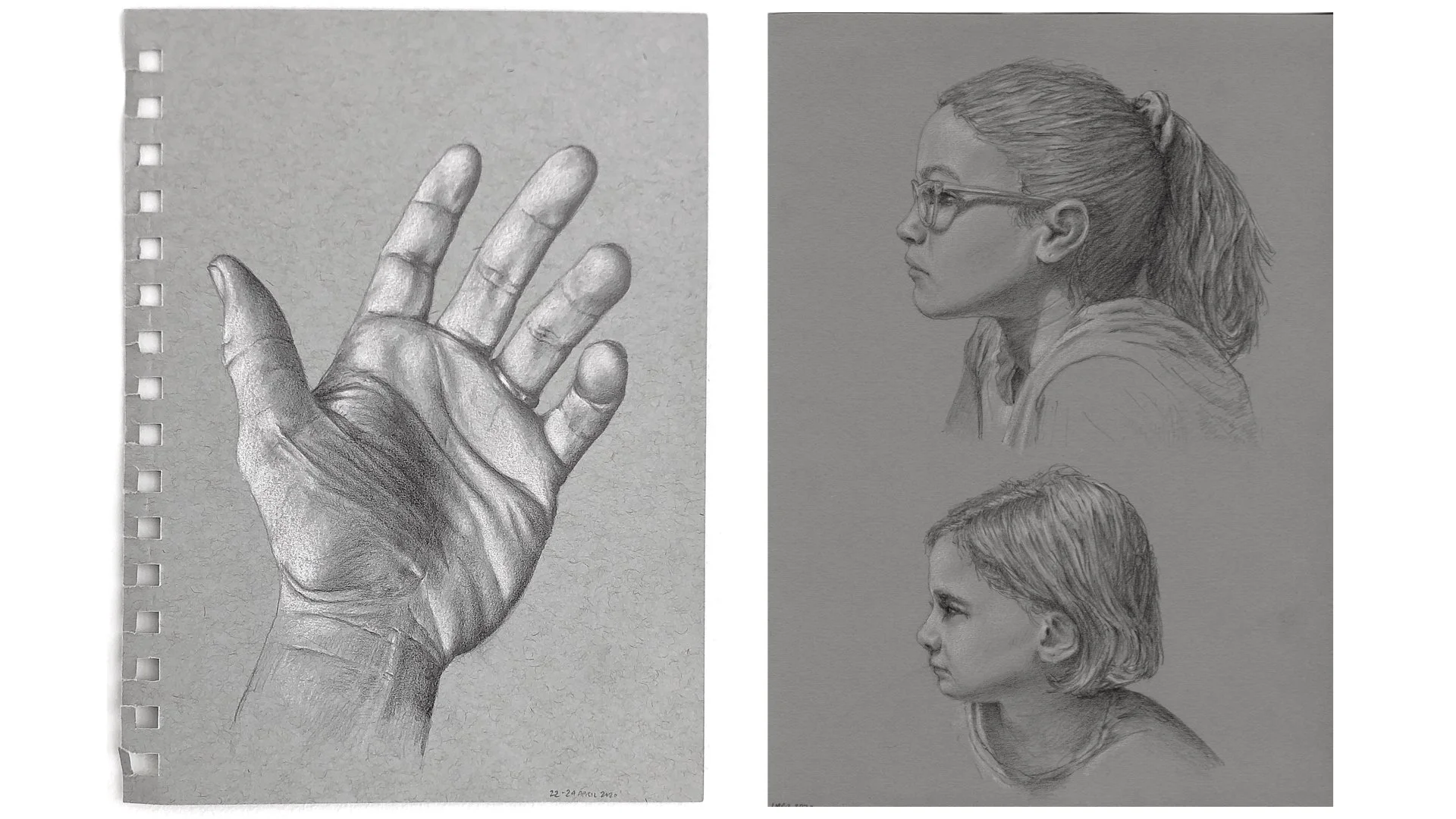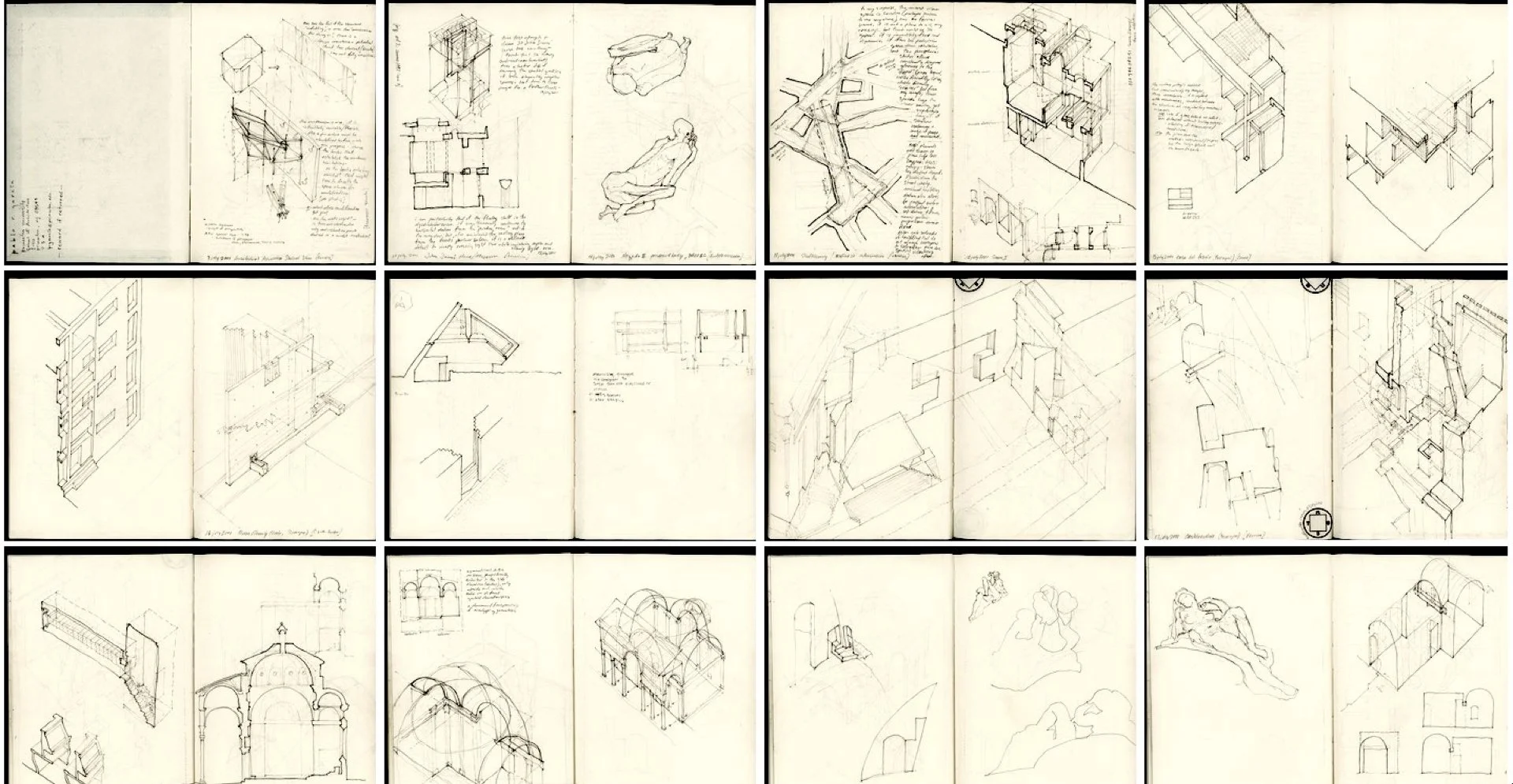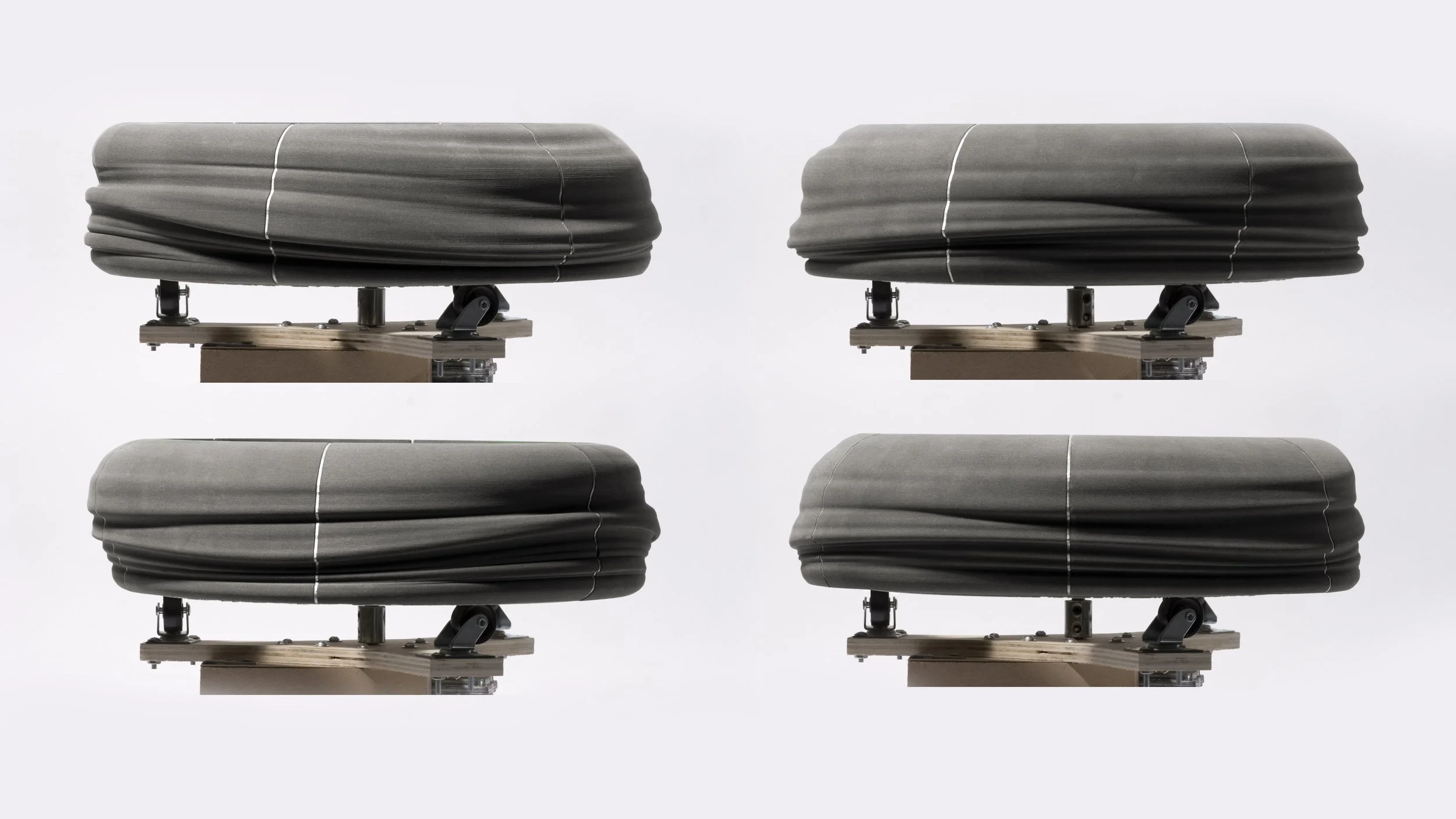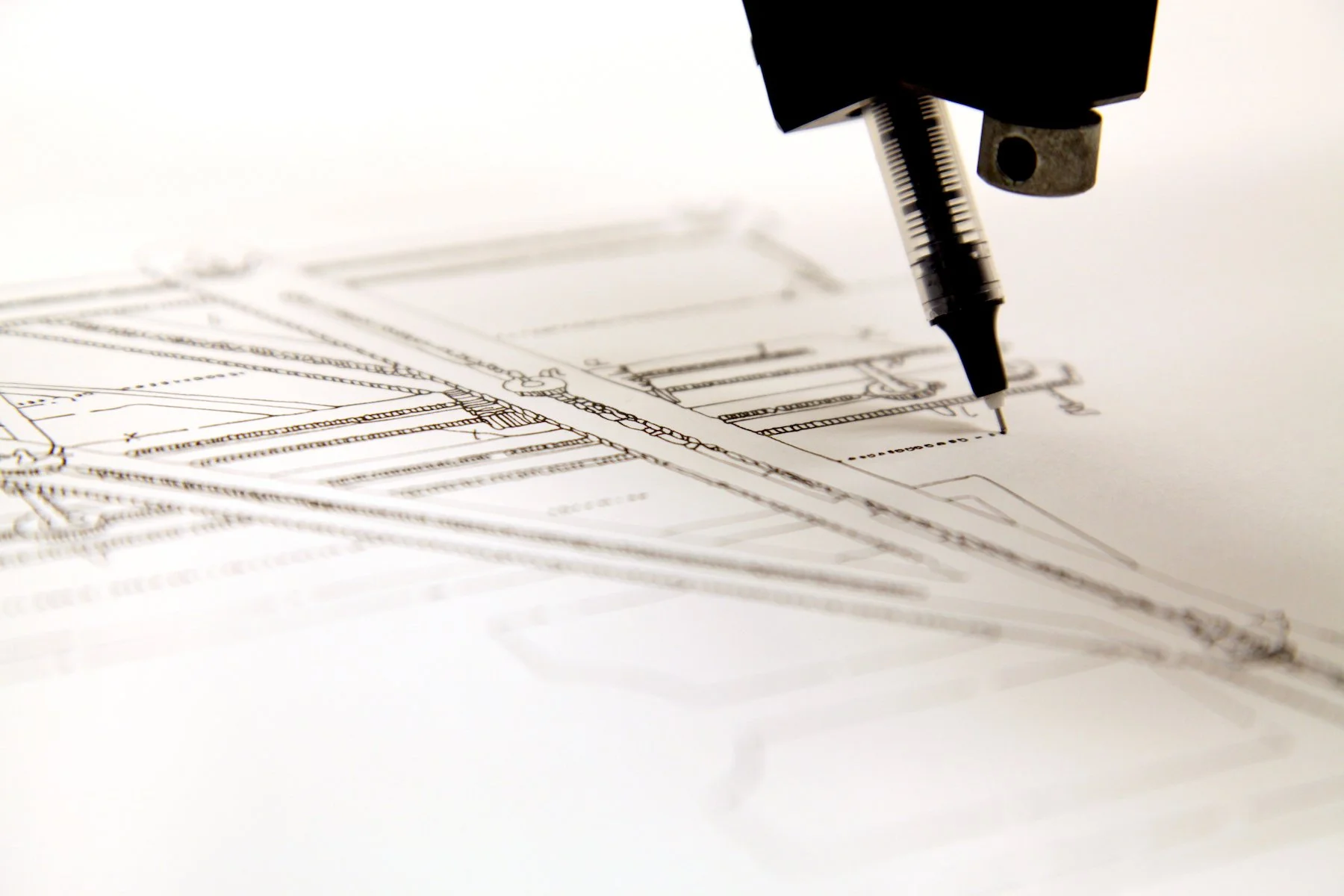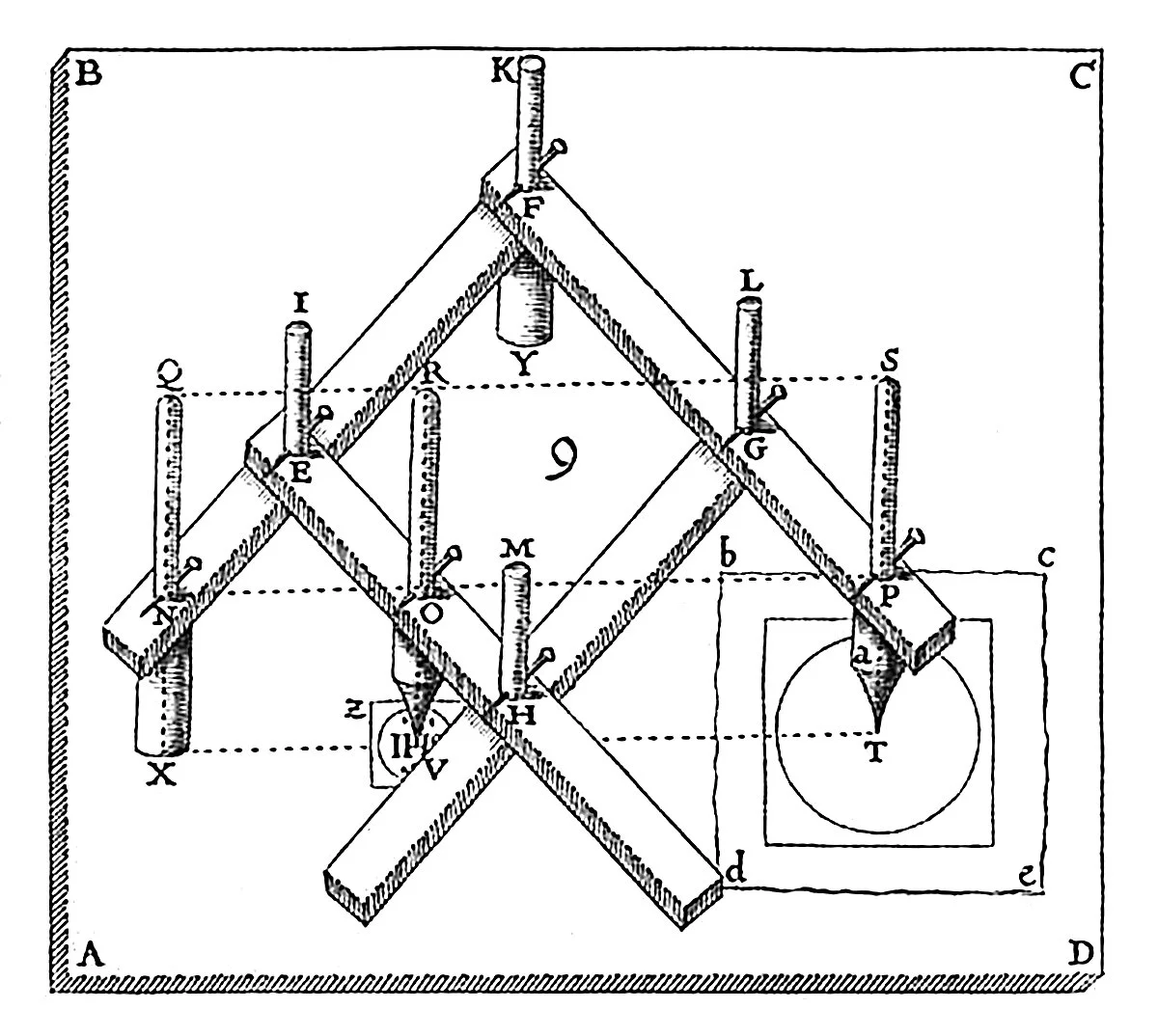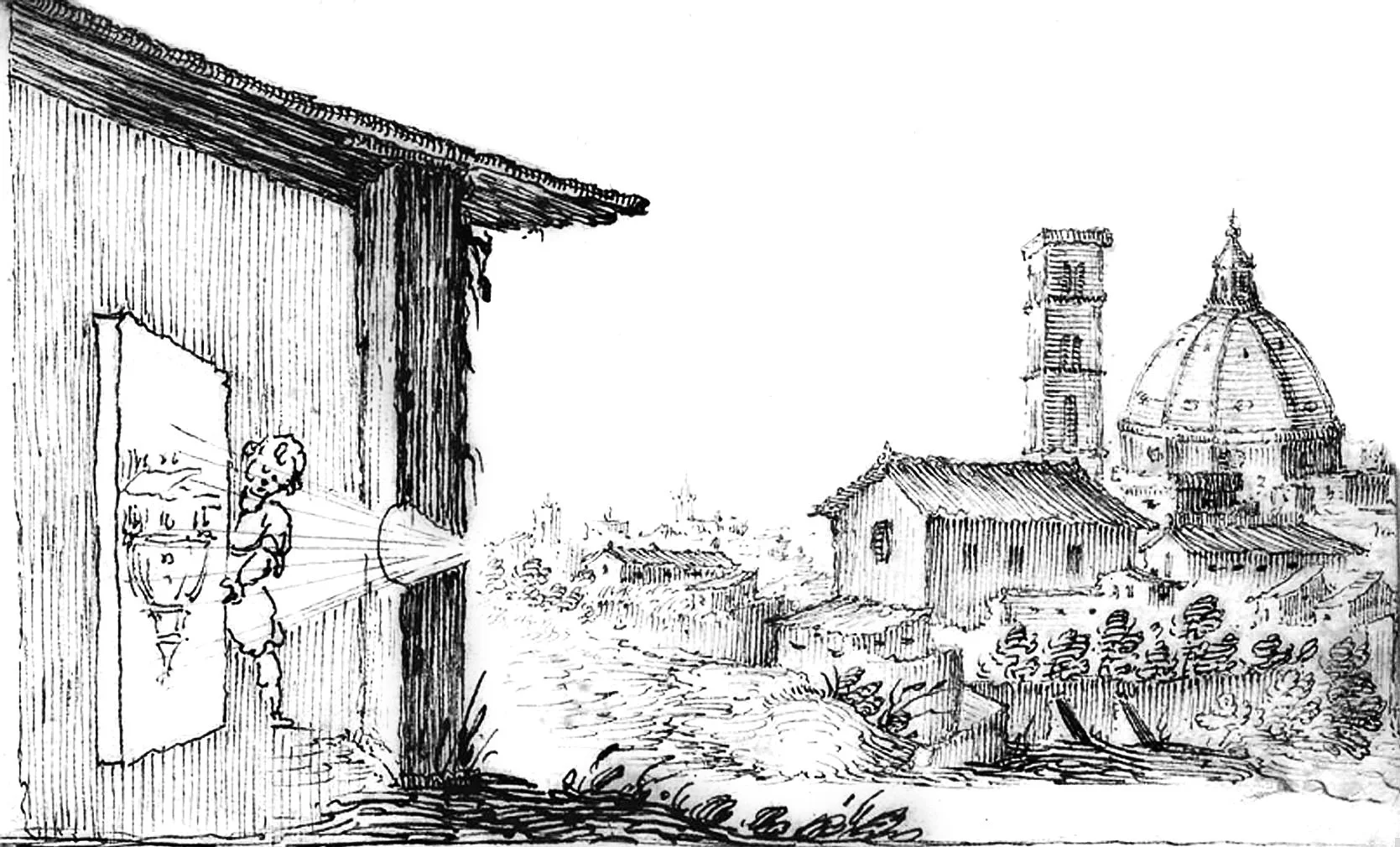But Can It Draw?
Published in the Leverhulme Centre for the Future of Intelligence Blog at the University of Cambridge.
Drawing is a slow process filled with rapidly oscillating feedback loops. The hand moves a stylus to make a mark, the eye watches the line, and the artist assesses that line’s qualities and adjusts accordingly. This can happen many times per second for many hours. A drawing is a labor of choices; evidence of this human labor saturates a final drawing. AI-generated images simply appear; the production process—the labor—is invisible. We cannot see the hand at work, which seems less human, and, as the mantra goes, there is no art without humanity. Before we imagine AI as creative, we must first return to a simpler, more human question: can it draw?
My research is guided not only by scholarly investigations, but by habit, memory, and hand: I draw. As a child, it was scribbles; as a teenager, comics. In college, it was figure drawing with pencil, charcoal, and ink, sessions in a studio with a live model. As an architecture student, it became design sketches and technical drawings. Those early experiences gave me a foundation to see drawing not as one thing, but as many.
Pandemic drawings by the author. Left: The Artist’s Hand (2020), Right: The Artist’s Daughters (2020).
Sketchbook of architectural analyses, drawn on site by the author (2018-19)
It became clear that drawing wasn’t only a discipline, but a method, shared across many. It appears in scientific visualization, performance notation, circuit diagrams, tattoos, makeup design, film storyboards, sports tactic diagrams, and more. Drawing isn’t limited to pencils and paper, either: pivot irrigation inscribes circles on farmland; skywriters draw vapor trails across the atmosphere. Drawing is not confined to a single field. It spans the extents of human creativity and communication. Drawing is pandisciplinary.
Drawing spans disciplines: Performance, architecture, tattoo art, dress patterns, comics, movie storyboards, calligraphy, makeup, circuit diagrams, and more.
Look down, look up: drawing is everywhere.
What keeps me fascinated, after all these years, is not only drawing’s range, but its depth—how it operates as a fundamentally human act. It is perceptual, somatic, psychological. It is both labor and performance, thinking and feeling, happening at once. When I draw, I don’t merely depict something. I participate in a continuous negotiation between attention and intuition, between what I think I see and what the line reveals. That, more than accuracy or skill, is what makes drawing so persistently compelling.
Art & Technology
I came of age as digital tools were emerging into everyday creative life. Netscape launched the first commercial web browser in my third year of college, not long after I received my first ever email address. Photoshop was still a new frontier. In school, I learned to draw by hand and by mouse. One foot in the inherited conventions of analog representation, one foot in the speculative futures of imaging.
Beyond my architectural training and practice, my work has expanded into art and design projects that explore the tensions between analog tradition and technological provocation. I’ve created installations, kinetic sculptures, virtual performances, and optical experiments—each engaging manual and digital drawing as both process and provocation.
In Profilograph (after Dürer), I start with a 1528 drawing from Albrecht Dürer’s Four Books on Human Proportion. Six profile portraits, each a variation on idealized proportions, are digitally extruded to form a single sculptural continuum. The resulting form rotates, revealing new head profiles embedded within Dürer’s original matrix—realized not by hand, but through a digital drawing technique in dialogue with 500-year-old images.
Profilograph (after Dürer). The rotating machine reveals a continuous morphing of facial profiles created from a set of Albrecht Dürer drawings on human proportions. The digitally-created model imagines new profiles between the original six.
Later, while learning to use a CNC milling machine, I adapted it with a pen attachment and taught it to draw. Curious about its potential, I programmed it to reproduce historical drawing machines: A Machine Drawing Drawing Machines. It is a feedback loop between centuries of creative technology, rendered visible through an emerging one.
Machine Drawing Drawing Machines. A CNC milling machine outfitted with a pen draws historical, pre-digital drawing machines.
Drawing Machines
A central focus of my art and technology work is a long-range investigation into drawing machines. More than a historical survey, it is a media-archaeological project. I reverse-engineer obsolete devices, reconstruct their mechanisms, and document how they function. Through these reconstructions, I explore six centuries of human–machine collaboration in the creative process. The ongoing archive, drawingmachines.org, serves as both a repository and a resource, inviting others to study the technological past of drawing as a way to better understand its digital and post-digital futures.
Screenshots of DrawingMachines.org
What is a drawing machine? When I say “drawing machine,” I mean any device that collaborates with a human to make marks. These machines are not fully autonomous. They rely on some form of human input or interaction. Sometimes, the machine guides the hand as it draws. Other times, it holds the stylus and responds to movement, data, or force. Long before electricity, inventors built complex mechanical systems—using cams, gears, pulleys, linkages—to help artists and scientists draw. These machines don’t replace the human; they extend what the human can do.
Each machine reflects a moment in our history—how we wanted to draw, what we wanted to see, and how we imagined the role of technology in that act. If AI represents new potential for creative technologies, these devices, spanning six centuries, are its ancestors.
Virtual Reality
One of the earliest examples of machine-assisted drawing emerged with the invention of linear perspective in the early 15th century. Drawing realistically is hard. Math helped, but the calculations weren’t easy. In his 1435 treatise On Painting, Leon Battista Alberti laid out the mathematical foundations of perspective, devised two decades earlier by his friend Filippo Brunelleschi. But at the very end of the book, he admits it’s complicated. So, he offers a shortcut: a simple device he called The Veil.
Alberti’s veil was a gridded scrim stretched on a wooden frame, placed between the artist and their subject. Looking through a fixed pinhole to stabilize the view, the artist could trace the visible world as it appeared on the veil’s surface. It was a significant turning point in art-technology relationships: a tool that physically embedded the geometry of perspective, allowing the artist to bypass complex calculations through guided observation. The veil did not only represent a view, it encoded a system.
Albrecht Dürer, drawing device from Underweysung der Messung, (1525)
Over the next four centuries, these devices grew more refined. Inventors and artists built increasingly elaborate perspectival machines to synthesize the geometry of vision and the labor of drawing. This lineage of machines—equal parts artistic aid and scientific tool—ebbed in the 19th century as photography arrived to redefine realism once again.
Cmd-C, Cmd-V
Not all drawing machines were designed to construct perspective or produce realistic images. Many were built to copy. Long before the advent of scanning, photocopying, or digital duplication, artists, engineers, and writers sought tools to reproduce their work by hand—precisely, efficiently, and often in real time. These devices reflect a different kind of drawing assistance: not a shortcut to realism, but a method of exact replication.
The pantograph, invented in the early 17th century by Jesuit astronomer Christoph Scheiner, is a beautifully simple tool. Four pivoting rods form a parallelogram that, when configured correctly, allows the user to trace a shape with one pointer while another pen reproduces it at a different scale. With a change of linkages, the device can enlarge or reduce an image with remarkable precision. For centuries, it was indispensable for copying architectural drawings, maps, and illustrations.
Christoph Scheiner, Pantograph, invented between 1603-05, image from Pantographice seu Ars delineandi res quaslibet per parallelogrammum lineare seu cavum, (1631)
Two centuries later, the desire to duplicate writing and drawing in real time led to more complex inventions. Isaac Hawkins’ polygraph used a double-armature system to produce a simultaneous copy as the writer penned a letter. Thomas Jefferson used it extensively, noting with satisfaction that he could retain a copy of every letter he sent.
Isaac Hawkins, Polygraph, Encyclopaedia Londinensis, (1825).
Ghost Images
Some drawing machines don’t move at all. Instead, they project or refract the world, allowing the artist to trace what they see. The camera obscura, known since antiquity but refined during the Late Renaissance, is essentially a darkened box or room with a small aperture or lens. Light from the outside world passes through the opening and casts an inverted image onto a surface inside. Artists could place paper at this surface and trace directly from the glowing scene—a luminous ghost of reality rendered flat and traceable.
Giulio Parigi, Camera Obscura from Strumenti e Macchine, (1590-1600)
Centuries later, the camera lucida offered a more portable version of the same idea. Using a system of prisms or mirrors, it superimposes a reflected image of the subject onto the drawing surface. Looking through the device, the artist sees both their paper and the subject simultaneously. Unlike the camera obscura, it requires no dark room or lens—only a steady hand to follow the contours of the optical illusion.
Camera Lucida, Scientific American Supplement, January, (1879)
These devices didn’t automate the act of drawing, but they restructured the visual field, turning light into a guide and the subject into something touchable by the pencil.
Science-o-Graphs!
In the 19th century, the role of drawing machines shifted again—this time into the realm of scientific measurement. As disciplines like physiology, geology, and electromagnetism grew increasingly specialized, scientists sought new tools to record natural phenomena with precision. The solution came in the form of sensor-driven machines that translated invisible forces into visible lines—the beginning of automated data visualization.
These machines, often ending in “-graph,” turned measurement into drawing. A cardiograph traced the rhythms of the heart; a seismograph recorded tremors in the Earth; a galvanograph registered electrical activity. Their names were a kind of code: decode the prefix, and you knew what the machine was built to capture. These devices rendered time-based data as real-time drawings, slowly charting waves, spikes, pulses, and patterns across long scrolls of paper.
Bruno Abdank-Abakanovicz, Integraph, Die Integraphen. Die Integralkurven undihre Anwendung. (1889)
Etienne Jules Marey, Sphygmograph, 1860. Image from R.E. Dudgeon M.D., The sphygmograph : its history and use as an aid to diagnosis in ordinary practice, (1882)
While these machines did not draw images in the traditional sense, they extended drawing into a new domain: one where the pencil responded not to the artist’s eye or hand, but to the rhythms of the natural world. In doing so, they marked a turning point in the human-machine relationship. For centuries, science was employed in the service of art. Geometry and optics offered tools to render space and produce precise images. But by the 19th century, the roles began to reverse. Art was enlisted art into the science’s service. Drawing became a method of inquiry, a way to inscribe phenomena that exceed the limits of perception.
Yet even as the purposes changed, the spirit of collaboration remained. These machines did not sever the connection between human and mark; they reconfigured it. For centuries, humans have explored how machines might extend or augment the creative act. Drawing machines—of every variety—are part of this long story. They do not replace the human entirely, but insert themselves into the act of drawing: mediating, guiding, or transforming the eye-hand circuit. Some assist the eye in directing the hand. Others guide the hand with mechanical precision. Still others take control of the stylus altogether. The arrangements vary:
eye → machine → hand → stylus
eye → hand → machine → stylus
hand → machine → stylus
machine → stylus
machine → hand → stylus
For centuries, drawing machines existed in dynamic entanglement with the human body—tools that guided, extended, or responded to the physical and cognitive rhythms of their users. Even when fully mechanized, they remained tethered to human intent and improvisation.
Diffusion Models
AI systems like Midjourney and DALL·E represent a radical break in the history of creative tools. These are not extensions of the hand or systems that unfold through touch and adjustment. They do not respond to gesture, pressure, or the feedback of movement. Instead, they operate at a linguistic remove, triggered by prompts, not by motion. There is no mutual process, no improvisational circuit. The artist does not draw; they describe. The creative act shifts from embodied interaction to verbal instruction.
That break is not necessarily a failure, but it is a departure from a long-standing model of creative collaboration. For centuries, drawing machines did not simply execute what humans commanded; they co-shaped the act of drawing itself. They mediated, guided, resisted, and responded—altering how lines were made and how images emerged. These devices were not neutral tools, but partners in a feedback loop of invention and adaptation. In contrast, today’s generative systems offer no shared space for process. They act, and we react. It may be that what feels strange or even unsettling about prompt-based images is this dissonance—the absence of co-creation, the lack of mutual shaping. They do not yet participate in the shared space of adjustment, negotiation, or embodied response. But perhaps they could. If AI is to become more than an image generator—if it is to join the creative lineage—it must first enter the collaborative space that has long defined human-machine making. The goal is not to replicate how we draw, but to rediscover what it means to create in dialogue.
* * * * *
